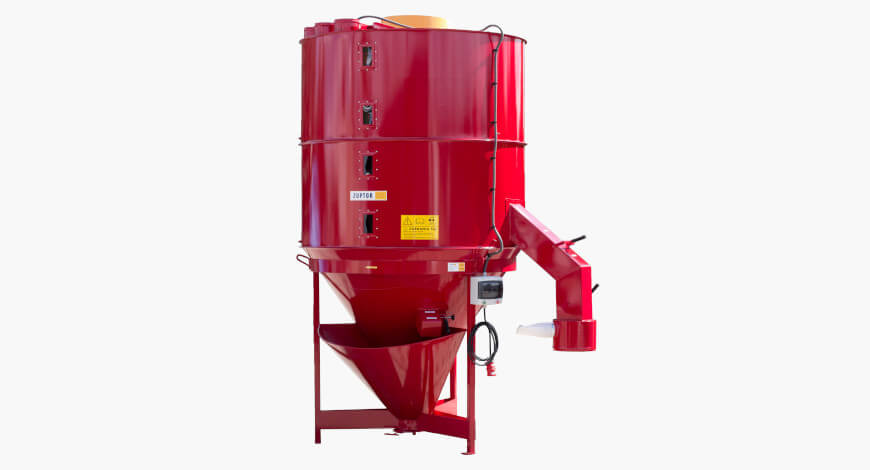
How do feed mixers work?
The mixer is an important component of any feed mill where feed is prepared for livestock.
The right choice of this equipment, tailored to the needs on the farm, is primarily intended to facilitate the work of the livestock farmer and minimise production costs. Mixers are not only used by large-scale livestock companies, but small farms producing feed only for their own use are also opting for them.
Feed mixers - vertical or horizontal?
The task of any mixer is to properly mix all the ingredients that go into the feed mixture. It can operate as a stand-alone unit or in combination with others form part of a process line. A measure of the quality of each mixer's performance is the homogeneity of the resulting feed mixture.
One of the divisions of the mixers that are available on the market is the location of the agitator in them and these mixers are divided into vertical and horizontal.
Vertical feed mixers
Vertical mixers is the most popular group of mixers. The mixing element here is an auger mounted vertically in a special casing pipe, which feeds the feed from the bottom to the top in the mixing process.
Between the casing pipe and the wall of the mixer, the mixed feed falls downwards and is again sent upwards by auger.
After this repeated mixing process, a finished product is obtained. The shredded components included in the mixture can be fed pneumatically via a suction and discharge shredder or by a screw conveyor connected to a feed shredder.
The non-blasted ingredients are fed through a hopper located directly next to the mixer or through a hopper on the screw feeder.
The mixing time depends on the capacity of the mixer and ranges from a few to several minutes. The feed is discharged via a discharge chute (sleeve) mounted in the wall of the mixer.
The finished feed can be bagged, fed into silos or feed bins, or transported on a feed wagon. The advantage of vertical mixers is their simple operation and low price.
Horizontal feed mixers
Horizontal mixers are dedicated to those who want to obtain a high quality feed mixture. Loading of the individual ingredients is usually carried out from a buffer tank located above the mixer or by means of auger conveyors.
The internal mixing system is a ribbon mixer that completely fills the mixer chamber.
This ensures a high degree of homogeneity of the mixture during the mixing process. Discharge from the mixer can be by a screw conveyor, belt feeder or redler.
In addition to the high quality of the resulting mixture, the great advantage of horizontal mixers is the short mixing time and rapid unloading of the finished feed.
Horizontal mixers are most often used in extended mixing lines; they are ideal for automated systems where high capacity and accuracy of mixing of the finished feed is sought.
